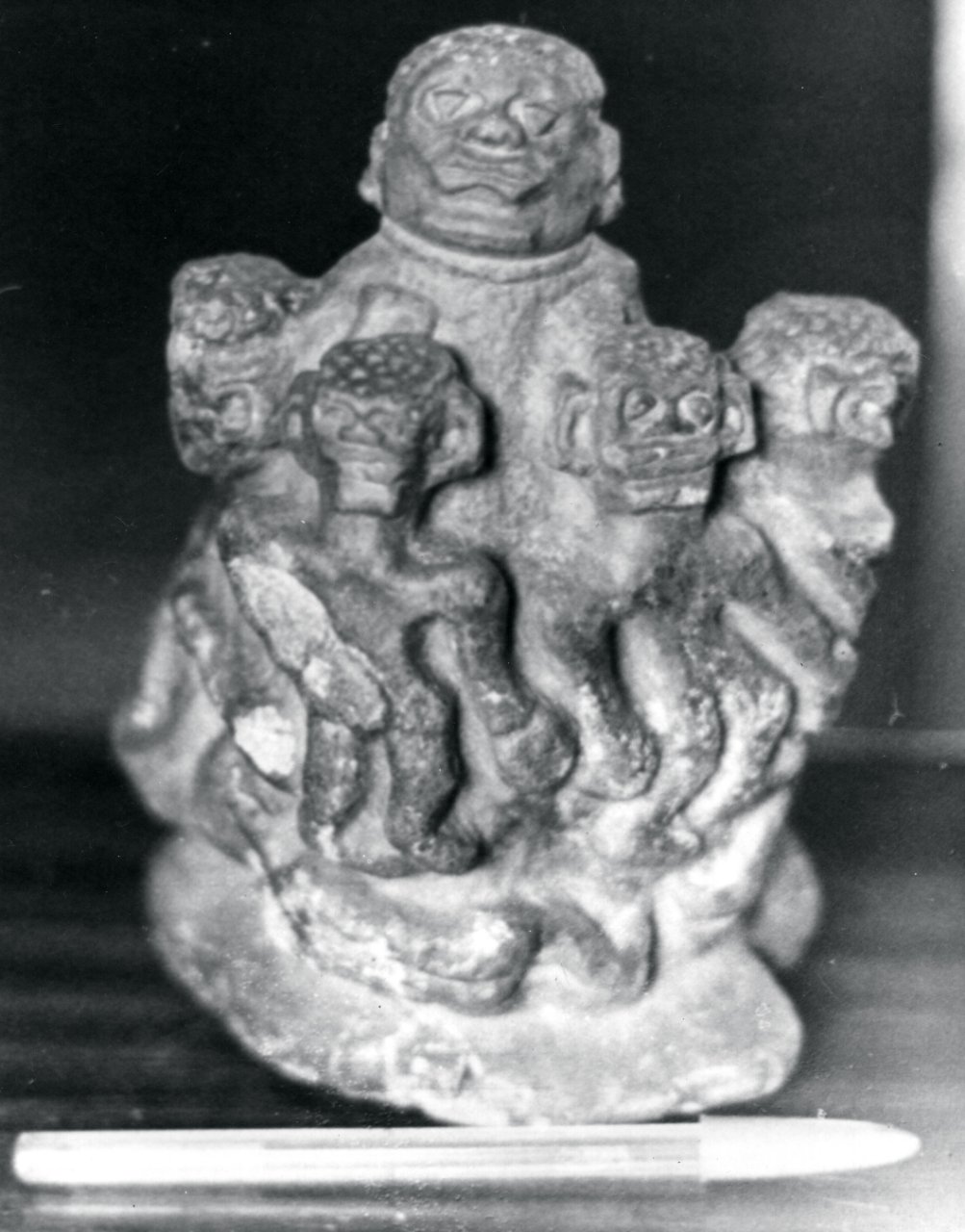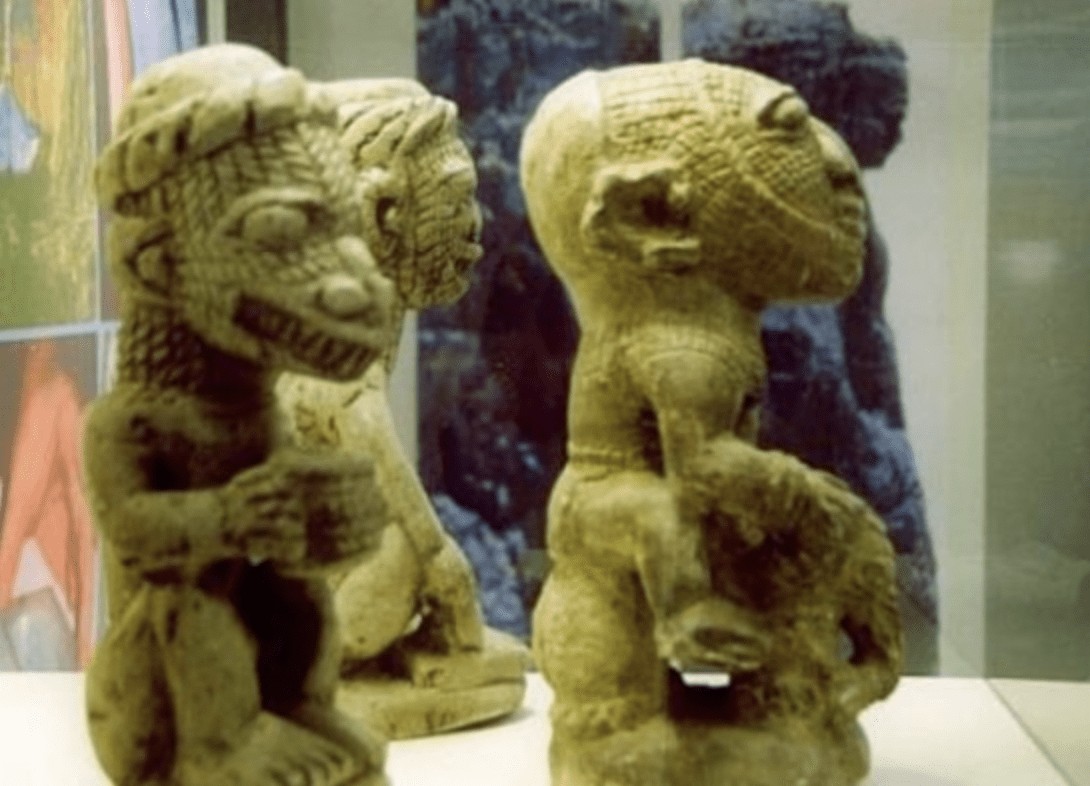Locals in Sierra Leone, Africa, were searching for diamonds when they discovered a collection of amazing stone figurines portraying various human ethnicities and, in some cases, semi-human beings. These figures are exceedingly ancient, maybe going back to 17,000 BC, according to some estimations.

Soapstone “Nomoli” figure from Sierra Leone (West Africa). © Wikimedia Commons
However, some aspects of the figures, such as the high melting temperatures required to create them and the presence of steel manipulated into perfectly spherical balls, suggest they were built by a civilization that would be considered highly advanced for its time if they were built around 17,000 BC.
Overall, the discovery raises fascinating concerns about how and when the Nomoli sculptures were made, as well as what role they may have served to people who made them.
The statues are mentioned in several old traditions in Sierra Leone. Angels, the ancient people thought, formerly resided in the Heavens. As a punishment for their terrible behaviour, God transformed the angels into humans and sent them to Earth.
The Nomoli figures serve as representations of those figures, and as a reminder of how they were banished from the Heavens and sent to Earth to live as humans. Another legend dictates that the statues represent the former kings and chiefs of the Sierra Leone region, and that the local Temne people would perform ceremonies during which they would treat the figures as if they were the ancient leaders.
The Temne were eventually displaced from the area when it was invaded by the Mende, and the traditions involving the Nomoli figures lost. While various legends may provide some insight into the origins and purposes of the figures, no single legend has been definitively identified as the source of the statues.
Today, some natives in Sierra Leone view the statues as figures of good luck, intended as guardians. They place the statues in gardens and fields in hopes of having a bountiful harvest. In some cases, in times of bad harvest, the Nomoli statues are whipped ritualistically as punishment.

Seated Figure (Nomoli). Public Domain
There is much variation in the physical properties and appearance of the many Nomoli statues. They are carved from different materials, including soapstone, ivory, and granite. Some of the pieces are small, with the larger ones reaching heights of 11 inches.
They vary in color, from white to yellow, brown, or green. The figures are predominantly human, with their features reflecting multiple human races. However, some of the figures are of a semi-human form – hybrids of both human and animal.

Human and animal looking Nomoli statues, British Museum. © Wikimedia Commons
In some cases, the statues depict a human body with a lizard head, and vice versa. Other animals represented include elephants, leopards, and monkeys. The figures are often disproportioned, with the heads being large compared to the body size.
One statue depicts a human figure riding on the back of the elephant, with the human appearing to be much larger in size than the elephant. Is this a representation of ancient African legends of giants, or is it merely a symbolic depiction of a man riding an elephant with no importance having been placed on the relative size of the two? One of the more common depictions of the Nomoli statues is the image of a large frightening-looking adult figure accompanied by a child.

Left: Nomoli figure with lizard head and human body. Right: Human figure riding an elephant, in disproportionate size. © Public Domain
The physical construction of the Nomoli statues is a bit mysterious, as the methods required to create such figures don’t match up with the era in which the figures originated.
When one of the statues was cut open, a small, perfectly spherical metal ball was found within, which would have required sophisticated shaping technology as well as the ability to create extremely high melting temperatures.
Some argue that the Nomoli sculptures demonstrate that an ancient society existed that was considerably more complex and sophisticated than it should have been.
The metal spheres were constructed of both chromium and steel, according to the researchers. This is an unusual discovery given that the first documented manufacturing of steel happened approximately 2000 BC. If the sculptures’ dating back to 17,000 BC is correct, how is it conceivable that the Nomoli statues’ designers were utilising and manipulating steel up to 15,000 years prior?
While the figures differ in shape and kind, they have a consistent look that suggests a shared function. That aim, though, is unknown. According to curator Frederick Lamp, the figurines were a part of Temne culture and custom before the Mende invasion, but the tradition was lost when the communities were relocated.
With so many concerns and ambiguities, it’s unclear whether we’ll ever have definite answers about the Nomoli figures’ date, provenance, and function. For the time being, they are a stunning picture of the ancient civilizations that came before those who presently reside in Sierra Leone.
source: mysteriesrunsolved.com








